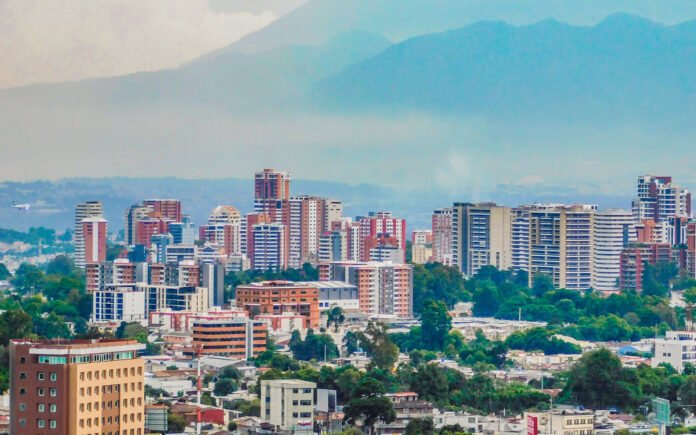Health insurance in Guatemala operates in a dual system composed of public and private providers, each with distinct characteristics, advantages, and limitations. While public health insurance covers the vast majority of the population, private insurance offers access to higher-quality care but remains financially out of reach for many Guatemalans.
Coverage and Accessibility
Public health insurance in Guatemala is primarily managed by the Ministry of Public Health and Social Assistance (MSPAS), the Guatemalan Social Security Institute (IGSS), and other state-supported entities like the Military Health Service and Expansion of Coverage Program (PEC). Collectively, these programs cover about 88% of the population. Coverage is most comprehensive for formal sector workers and their families under IGSS, while MSPAS serves the general population through tax-funded services.
In contrast, private health insurance covers only about 12% of the population, primarily serving wealthier urban residents and expatriates. International providers such as Cigna, Allianz, and Bupa offer customizable plans with global coverage, while local insurers provide access to private clinics and hospitals in urban areas. Accessibility to private care is high for those who can afford it but nearly nonexistent for lower-income populations.
Funding and Cost to Users
The public system is primarily funded by general taxation (MSPAS) and payroll contributions (IGSS), with IGSS requiring 3% of an employee’s salary, 7% from employers, and optional contributions for additional services. For most citizens, public health services are free or provided at a nominal cost, though funding limitations often result in poor infrastructure and service delays.
Private insurance, on the other hand, is funded through monthly or annual premiums and co-payments. Costs vary based on the plan, age, and health status of the insured. Though private insurance offers access to high-quality care and shorter wait times, it requires substantial out-of-pocket expenses, making it inaccessible for many Guatemalans.
Service Quality and Scope
Public providers offer a range of services from primary to tertiary care, including some specialized treatments like cardiology and oncology through IGSS. However, public facilities often face chronic underfunding, staff shortages, and outdated equipment, particularly in rural areas. Recently, the government has partnered with international bodies like UNOPS, investing $900 million to modernize hospitals and improve service delivery.
Private health insurance, by comparison, provides superior quality of care with access to modern facilities like Centro Médico de Guatemala and Sanatorio El Pilar. Services typically include outpatient, inpatient, maternity, dental, and even emergency evacuation. Plans are often tailored to individual needs, especially with international providers.
Challenges and Equity
Both systems face significant challenges. Public health insurance struggles with underfunding, bureaucratic inefficiency, and geographic inequity—rural and indigenous populations are especially underserved. Private insurance, although efficient and high-quality, is prohibitively expensive for the majority of the population and does little to reduce national healthcare inequality.
Top Public Health Insurance Providers in Guatemala
Guatemala’s public health insurance system is composed of several government-managed programs that collectively aim to offer affordable healthcare access to the majority of the population. Though fragmented, the public sector covers approximately 88% of Guatemalans, including formal workers, vulnerable populations, and military personnel. Below are the top public health insurance providers in Guatemala, detailing their costs, services, coverage, financial structure, and user satisfaction.
1. Ministry of Public Health and Social Assistance (MSPAS)(Official website: https://www.mspas.gob.gt)
Cost: Free or low-cost for all citizens.
Coverage/Services: Offers primary, secondary, and tertiary healthcare services. Includes emergency services, maternal and child health, outpatient care, and basic prescription medications.
Open to: All citizens, with particular emphasis on the uninsured and informal workers.
Core Financial Features: Funded primarily through general taxation. It receives a relatively low percentage of national GDP (<3%), leading to funding constraints.
Consumer Satisfaction Score: ⭐⭐☆☆☆ (2.5/5)
Commentary: MSPAS is the backbone of Guatemala’s public healthcare, especially in rural areas. However, long wait times, understaffed facilities, and limited resources impact patient satisfaction.
2. Guatemalan Social Security Institute (IGSS)(Official website: https://www.igssgt.org/ )
Cost: Funded through payroll contributions — 3% from the employee, 7% from the employer, with an optional 0.85% for additional maternity and disease coverage.
Coverage/Services: Comprehensive services including general medicine, specialist care (oncology, cardiology), diagnostic services, surgeries, and medications.
Open to: Formal sector employees and their dependents (spouses and children under 5).
Core Financial Features: Payroll-based funding. Operates its own hospitals and clinics and contracts private providers for specialized care.
Consumer Satisfaction Score: ⭐⭐⭐☆☆ (3.2/5)
Commentary: IGSS is considered superior in service quality compared to MSPAS, but access is limited to formal workers, and bureaucracy sometimes delays service delivery.
3. Military Health Service
Cost: Free for military personnel and their families.
Coverage/Services: Hospital care, emergency services, rehabilitation, and mental health care tailored to military needs.
Open to: Active and retired armed forces personnel and their families.
Core Financial Features: Fully government-funded through the defense budget.
Consumer Satisfaction Score: ⭐⭐⭐⭐☆ (4.0/5)
Commentary: Highly rated within its user base for consistent and dedicated service quality, though its reach is limited to a specific demographic.
4. Expansion of Coverage Program (PEC)
Cost: Free for target populations.
Coverage/Services: Preventive and primary care services in remote and indigenous areas, including vaccinations, maternal care, and health education.
Open to: Marginalized and rural communities without access to traditional healthcare services.
Core Financial Features: Funded variably by the government and international donors. Contracted NGOs provide services under government oversight.
Consumer Satisfaction Score: ⭐⭐☆☆☆ (2.8/5)
Commentary: While PEC has expanded access in underserved areas, it is vulnerable to political shifts and inconsistent funding, impacting continuity and service quality.
5. Public Hospitals Network (e.g., Hospital San Juan de Dios)
Cost: Services are mostly free or subsidized based on income.
Coverage/Services: Inpatient care, surgeries, trauma services, and emergency room services.
Open to: All citizens, especially those without insurance.
Core Financial Features: Government-funded under MSPAS but often supplemented with aid or donations.
Consumer Satisfaction Score: ⭐⭐☆☆☆ (2.6/5)
Commentary: The public hospital network forms the clinical backbone of the system but struggles with overcrowding, outdated infrastructure, and limited equipment.
Top Private Health Insurance Providers in Guatemala
While Guatemala’s public healthcare system serves a majority of the population, private health insurance plays a crucial role in offering faster, more personalized, and higher-quality medical services—especially to those in the middle and upper-income brackets. The private health insurance market in Guatemala is relatively small but growing, primarily serving urban residents and the formal sector. Below are the top private health insurance providers in Guatemala, each analyzed by their pricing, coverage, eligibility, financial structure, and customer satisfaction.
1. Seguros G&T (G&T Continental Seguros Médicos)(Official website: https://segurosgyt.com.gt/)
Cost: Premiums range from USD 500 to USD 3,000+ annually, depending on age, health status, and coverage level.
Coverage/Services: Includes hospitalization, outpatient care, diagnostics, specialist visits, maternity, and optional dental/vision. Offers both local and international plans.
Open to: Open to Guatemalan citizens and residents. Applicants must pass health evaluations.
Core Financial Features: Privately funded through premiums. Offers tiered plans and co-payment options.
Consumer Satisfaction Score: ⭐⭐⭐⭐☆ (4.1/5)
Commentary: Known for excellent hospital networks and reliable customer service. G&T is considered one of the most stable and trusted providers in the country.
2. Pan-American Life Insurance Group (PALIG Guatemala)(Official website: https://www.palig.com/guatemala)
Cost: Around USD 400 to USD 2,500 annually depending on plan and risk profile.
Coverage/Services: Offers a wide range of plans with coverage for general and specialist care, major surgeries, cancer treatment, and international medical evacuation.
Open to: Open to individuals and corporate clients. Some restrictions for high-risk applicants.
Core Financial Features: Internationally backed; funded through premiums with strong reinsurance support.
Consumer Satisfaction Score: ⭐⭐⭐⭐☆ (4.0/5)
Commentary: Popular for expats and high-net-worth individuals due to global coverage and flexible customization. PALIG offers bilingual service and cross-border medical access.
3. Seguros El Roble(Official website: https://www.elroble.com/)
Cost: Typically ranges from USD 300 to USD 2,000 annually.
Coverage/Services: Covers emergency care, hospitalization, specialist consultations, diagnostic tests, and optional dental/vision. Offers “Seguro Médico Internacional” plans.
Open to: Open to individuals, families, and corporate groups.
Core Financial Features: Part of the El Roble Group; funds services via premiums with flexible deductible options.
Consumer Satisfaction Score: ⭐⭐⭐☆☆ (3.7/5)
Commentary: El Roble is praised for its affordability and strong domestic network, although some users report delays in claim processing and limited high-tier international hospital coverage.
4. ASSA Compañía de Seguros Guatemala(Official website: https://www.assanet.com.gt/)
Cost: Annual premiums range from USD 400 to USD 2,200 based on age and coverage level.
Coverage/Services: Comprehensive care, including hospitalization, surgery, cancer treatment, maternity, and outpatient services. Offers local and regional coverage.
Open to: Open to most individuals with a medical underwriting process.
Core Financial Features: Regional insurer with stable premium-based revenue; offers co-pay models.
Consumer Satisfaction Score: ⭐⭐⭐☆☆ (3.5/5)
Commentary: ASSA provides solid middle-tier options for families and small businesses. Its regional integration with other Central American countries adds appeal for frequent travelers.
5. MAPFRE Guatemala(Official website: https://www.mapfre.com.gt/)
Cost: Varies between USD 350 and USD 2,800 annually.
Coverage/Services: Includes general and specialist medical care, hospitalization, outpatient services, preventive check-ups, and international health assistance.
Open to: Available to individuals, families, and corporate groups. Subject to age and medical history.
Core Financial Features: Backed by MAPFRE Group (Spain); revenue from premiums with diverse international reinsurance.
Consumer Satisfaction Score: ⭐⭐⭐⭐☆ (4.0/5)
Commentary: MAPFRE is widely respected for its global strength and transparent claim process. Its international backing adds a layer of financial security that appeals to discerning clients.
READ MORE: Private and public health insurance of Togo (Make informed choices)


